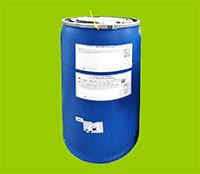1. Wetting agent
Wetting agents for water-based coatings can be divided into anionic and non ionic types. The combination of wetting agents and dispersants can achieve ideal results. The dosage of wetting agent is generally a few thousandths. Its negative effect is foaming and reducing the water resistance of the coating film.
2. Dispersant
The dispersants used in latex paint are divided into four categories: phosphate dispersants, polybasic acid homopolymer dispersants, polybasic acid copolymer dispersants, and other types of dispersants. Other dispersants, such as AMP-95, have a chemical name of 2-amino-2-methyl-1-propanol. Amino groups adsorb on the surface of inorganic particles, while hydroxyl groups extend into water and stabilize through steric hindrance. Due to its small molecular size, its steric hindrance is limited. AMP-95 is mainly a pH regulator.
There are many dispersants developed specifically for water-based industrial coatings, suitable for dispersion of organic and inorganic pigments, with good water resistance.
3. Defoamer
There are many types of traditional water-based paint defoamers, which are generally divided into three categories: mineral oil defoamers, polysiloxane defoamers, and other types of defoamers.
Mineral oil defoamers are commonly used and are mainly used in flat and semi gloss emulsion paints. Traditional water-based paint defoamers achieve defoaming goals by being incompatible with water, which can easily cause surface defects on the coating film. This molecular level defoamer uses a super grafted star polymer as an incompatible surfactant and has achieved good results in the application of water-based coatings.
There are also many varieties of anti mold and anti algae agents, roughly including isothiazolinone, benzimidazole, iodynepropyl, substituted aromatic hydrocarbons, dithiocarbamate salts, etc. according to their active components.





